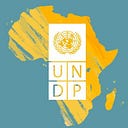Co-creating Climate Solutions Series
How can we better work with Youth to solve the climate crisis? African Youth weighs in.
The Africa Climate Week in Ghana last month offered an important step towards realizing the goals of the Paris Agreement on climate change. Not only did it gather more than 2,500 stakeholders across the continent to exchange experiences on climate action, it also included for the first time an important party that had not been included here-to-date: youth.
Having the younger part of our population with us on our side to fight climate change is imperative. Around 42 percent of the world population is under 25 years of age, with Africa’s youth population projected to continue rising during the course of the 21st century. Africa’s Agenda 2063, which outlines an ambitious vision for the continent’s development trajectory, also envisions an Africa whose development is “people driven”, harnessing the potential offered by women and youth.
It is their world that is being negotiated and created now. According to the latest IPCC (Intergovernmental Panel on Climate Change) report on climate change, we have another 12 years to ‘bend’ the curve of emissions to keep global temperature rise to 1.5C — or we will face unprecedented risks to our planetary health.
How can the UN and governments better work with Youth to solve the climate crisis?

To answer this question, a number of interesting ideas emerged from crowdsourcing input from the young, enthusiastic contributors to the Africa Climate Week:
Co-create solutions with the government — It is important for the government to have an engagement strategy for society, including youth. Nigeria, for instance, works through its Nigeria Open Government Partnership . Even her state is keyed into this initiative, according to Gloria Kasang Bulus from the Bridge that Gap, Hope for Africa Initiative, Nigeria. This gives her an opportunity to work hand in hand with the government. Civil society organizations can form a valuable bond between government and youth, since they master translating complex policies into relatable topics and actions on the ground. They can also communicate needs from the grassroots level and keep track of government actions to address them.

Educate and raise awareness — involve children early on before they start developing their habits. Sensitization to climate change has to happen on a consistent basis, and in a funny, humorous way, so “it sticks in everyone’s mind”. Ways to do this include cartoons, films, theater shows and art projects. The Young Catholic Students organization, for instance, created a “Sustainable Lifestyle Campaign” and a “Sustainable Cities”. For many of the urban African youth, outreach via social media would go a long way, while the best way to reach the young in remote areas, could be done through their schools and by organizing public awareness events or community festivals. For traditional societies, working through tribal and religious leaders offers another good way to reach large constituencies, including women and children.

Spread the message with climate ambassadors — working with Erasmus, Agbolo also found that we need to go beyond just mere messaging to youth but leverage them as climate ambassadors to create change. “It’s surprising to see that as the children go back home, they tell their testimonies about what they’ve learned and then they use it at home also. Young people are great ambassadors to bring change to our environment.” Going on social media to reach youth is key “We create awareness on social media because that’s what they use”, noted Felicity Gborglah from the Sentrep Foundation, Ghana. UNVs and interns themselves can turn into devoted ambassadors, utilizing not only face-to-face encounters but also social media platforms like Facebook, Instagram, Snapchat which are highly popular with African youth.

Youth Entrepreneurship — work with youth organizations that harness the energy and creativity of students. The Sentrep Foundation in Ghana motivates new youth leaders to take up the Sustainable Development Goals and solve them in innovative, yet traditional African ways. RILAB from the Resilient Africa Network is targeting students from remote areas to identify development challenges and jointly create green solutions. Greenway International Foundation, another youth-run organization, is working with student bodies on recycling and planting one million green trees on college campuses by 2030.


But green ideas from the young will green the economy of tomorrow. This is why Next Generation Africa is not only working with students on green solutions but also trying to incorporate ‘green thinking’ into future economic activities.
Civil Service, internships or volunteering — according to UN Volunteers, volunteering is one of the best ways to introduce the younger generations to climate change. Internships, on the other hand, allow youth to go for a deeper immersion and learn about climate change in an organizational setting. Some governments, including the government of Ghana, run civil or public service programs for recent college graduates. This offers the benefit of strengthen local governments and institutions, having youth actively contribute to the country’s development, while providing young graduates with hands-on training on key issues such as climate change and resilience.


In conclusion..
It is clear that there is a lot of interest, enthusiasm and creative brainpower among Africa’s youth. The question is to which extent governments will be able to harness this tremendous power for sustainable development. Now governments and development partners need to think about concrete ways for youth engagement and capacity development for civil society organizations so that they can create this vital link to the next generation.

Text by Katharina Davis, Climate Change Specialist, NDC Support Programme, UNDP.
Photo editing By Rico Cruz, Photography Intern at UNDP New York.
